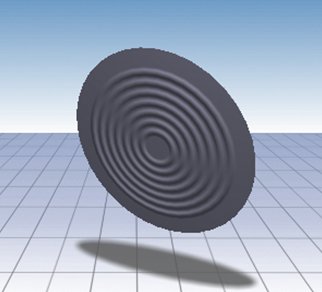The Two Main Types of Solid Center Metal Diaphragms and How They’re Different
Leave a CommentMetal diaphragms are specially engineered components that fulfill several critical roles across many industries. Generally nothing more than thin, circular plates, diaphragms help regulate pressure levels in complex machinery systems.
What renders these plates so critical to countless processes is their ability to change their shapes as needed. Diaphragms undergo elastic deformation when subjected to axial loading or pressure, and this allows them to play many different roles.
Typical roles of solid metal diaphragms include:
- Regulating pressure
- Converting movement into measurable communication with equipment
- Creating a physical barrier between opposing forces involving gas and liquid
- Acting as a membrane while fluids are pumped
- Serving as predictable failure points to protect equipment from the risk of overpressure
- Cycling for millions of strokes
- Providing reliable performance in corrosive environments and extreme temperatures
Metal diaphragms exist in two main forms: high-sensitivity low-pressure (HSLP) diaphragms and low-sensitivity high-pressure (LSHP) diaphragms. Understanding the differences between the two is crucial to finding the best fit for your applications.
High-Sensitivity Low-Pressure Diaphragms
HSLP diaphragms appear in applications that require the diaphragm to move a significant amount without necessitating a sizable application of pressure. These devices most frequently help with pressure sensor isolation, especially in the food processing and pharmaceutical industries.
Both these industries use HSLP diaphragms to protect fluids from contamination through the use of pressure sensors. These sensors are activated by excess pressure within the system, allowing machinery to automatically channel fluids when the pressure reaches a certain threshold. In food processing and pharmaceutical applications, HSLP sensors allow fluids to advance to the next stage of processing only when they have reached the desired volumes, helping operators precisely control the mixing and processing of various substances.
Many other industries requiring ultra-pure process fluids also take advantage of pressure sensors, and therefore rely on HSLP diaphragms. Some other common applications of these systems include:
-
- Aerospace instruments like altimeters
- Aneroids for oxygen systems and automatic deployment systems
Low-Sensitivity High-Pressure Diaphragms
LSHP diaphragms best suit applications that require the diaphragm to remain in place even under high pressure. Although they appear less frequently than HSLP diaphragms, they play just as important roles in regulating pressure in fluid-based systems.
LSHP diaphragms especially aid in converting movement into computer-readable communications. They can be calibrated to only open at precise pressures, allowing operators to take accurate measurements throughout their use.
They’re also often implemented as gas–liquid barriers and failure points because they can operate as a last line of defense against overpressure and machine failure. Their abilities to perform well in extreme conditions also make them beneficial to medical device manufacturers, who use LSHP diaphragms to regulate pressure-based equipment.
Low-Pressure High-Value Procurement From Hudson Technologies
At Hudson Technologies, we design a wide range of HSLP and LSHP diaphragms for many applications. We build customizable diaphragms from materials including:
- Stainless Steel
- Hastelloy
- Haynes
- Inconel
- Monel
- Titanium
We design all products to Hudson Standard Tolerances.
If you would like to learn more about what Hudson Technologies can bring to the table, contact us today.






